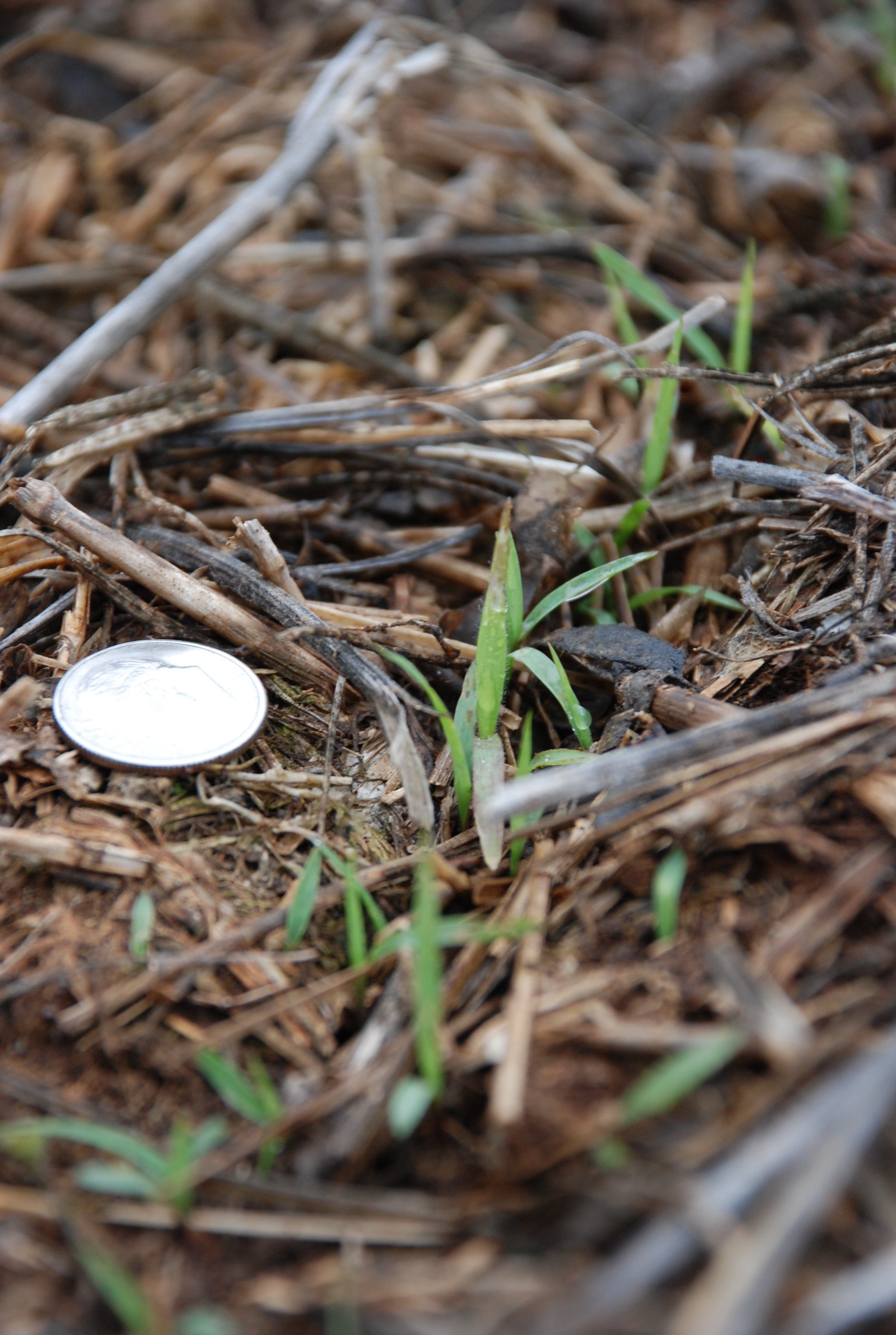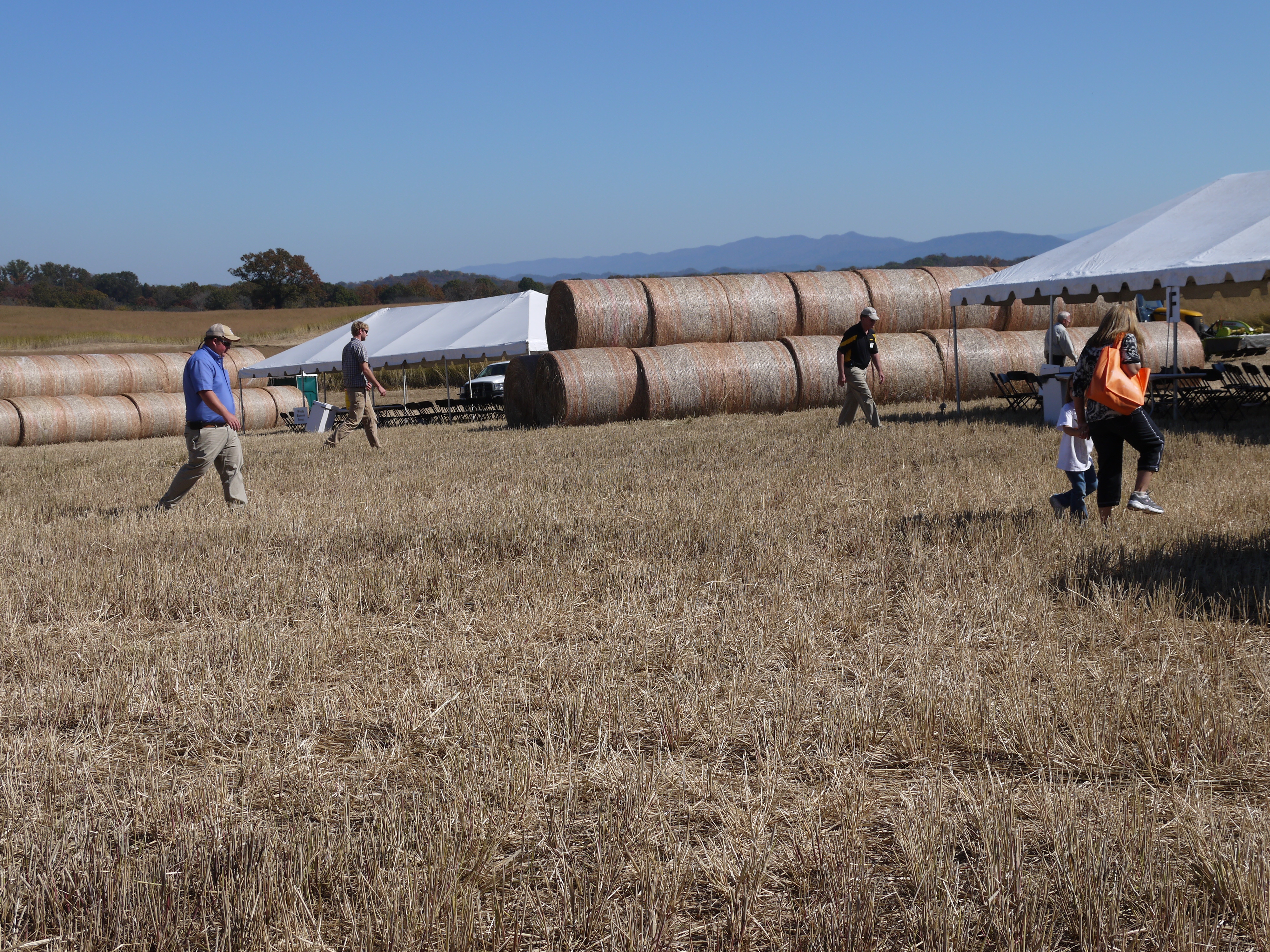Switchgrass (Panicum virgatum)
Introduction

| Growing cycle | Grows as a perennial grass, harvested at minimum height of six inches, then regrows from root crown |
| Planting stock | Commercially available seed |
| Age at first harvest | Harvesting is recommended after the third year |
| Yield per Acre | 7 to 12 tons per acre (after the third year) |
| Heating Value | 8,014 BTU/pound |
Switchgrass has strong potential to be grown as a biomass feedstock for use as a biofuel across the southeastern United States. As the bioenergy industry continues to grow, this grass will provide another option in the biomass to bioenergy profile. This factsheet covers basic details regarding switchgrass growth, production and yield for bioenergy in the southeast.
Species Distribution
Switchgrass(Panicum virgatum) is a warm - season perennial grass native to the United States. Its rapid growth rate, abundant biomass and adaptation to different sites varieties have made it a prime candidate for development as a biofuel feedstock (Table 1).Switchgrass can grow up to 10 feet in height and creates root networks that on can extend between 3 - 10 feet belowground.Most of its growth occurs between April and October, and it produces a new flush of tillers every spring.Tolerant of drought, low soil pH, and low nutrient levels, switchgrass has proven to be both hardy and low - maintenance, and can grow on more marginal lands
Geographic Distribution
Switchgrass can be found natively in almost all regions of the United States. It is most abundant in the tallgrass prairies of the Great Plains regions east of the Rocky Mountains and extends north to Canada and south to Mexico. Although switchgrass is more common east of the Rocky Mountains, it can be found in the western U.S. in all states except for California, Washington, and Oregon.
Switchgrass has a number of cultivars that each thrive in different climatic regions and altitudes, with some varieties characterized as upland or lowland. Alamo and Kanlo cultivars are lowland varieties, which are more suitable for the South. Lowland cultivars grow taller with heights of 9-10 feet (vs. upland cultivar heights of 5-6 feet). These lowland varieties produce more biomass per acre then the upland varieties as well. These cultivars are able to produce superior yields in areas with milder winters and high annual rainfall, most notably across much of the Southeast. Switchgrass can grow on a variety of soil types and can thrive even on soil that is too erodible for the production of traditional crops, such as corn.

Production Process
Managing for switchgrass is a relatively simple process given the low degree of maintenance required and the ability to use common farm equipment for site preparation and harvest. Switch grass does well on moderately well- to well-drained soils with a soil pH at 5.0 or above and moderate fertility levels. Switchgrass can be planted using no-till or conventional tillage methods. Planting should begin when soil temperatures are consistently above 65°F, as early as mid-March and up to mid-June for the Southeast. Seed should be spread at a rate of 5-6 pounds of pure live seed per acre onto firmed seedbeds using either seed drills or broadcast spreaders. If a soil test shows low levels of phosphorous and potassium, then fertilizer containing phosphorus, potassium, and micronutrients (but not nitrogen) can aid in the establishment and early growth of switchgrass stands. Nitrogen fertilizer can later be added after successful establishment of the plants to further supplement growth; if nitrogen is added too early, it can stimulate weed growth and hinder the establishment of the switchgrass. Because the risk of weeds outcompeting the switchgrass seedlings is so high, herbicides should be applied both before and after planting, and the site should be monitored often to identify any weed issues.
The establishment of switchgrass can often take several months, and peak production may not be reached until the third year after planting, which is when it reaches maturity. After becoming completely established, switchgrass stands can produce consistent yields throughout its ten to twentyyear lifespan. Switchgrass should typically be harvested in the fall from as early as October (for a poorly drained field) through mid-February in the South. Typically, the switchgrass is mowed in the first part of the harvest period and allowed to “cure,” to a desirable moisture content before being baled. Managing moisture content is a key component of switchgrass harvesting. It is recommended to cut switchgrass to a minimum height of six inches, and within the range of 6-10 inches, in order to maintain stand density and prevent damage to the crown of the plant.


Yield
Switchgrass yields are dependent on both climate and management intensity. Optimum yields can be reached after three years, as the first year of growth includes stand establishment and controlling weeds. Within the first year, a 30% yield is expected, rising to a 70% yield in the second year and a 100% yield in the third year. Choosing the right cultivar plant in any given region is also very important in maximizing yields. Information on where to find the right cultivar can be found by contacting county extension agents or state cooperative extension offices. Switchgrass seeds of various cultivars, including Alamo, are available commercially from numerous agriculture supply companies.
Conclusion
Switchgrass has excellent potential as a feedstock for bioenergy. Its fast growth and harvest rate, abundant biomass and ability to grown on a wide range of sites make it a desirable crop for bioenergy. For more information on growing switchgrass in the Southeastern United States, please refer to the Guidebook for Sustainable Production Practices of Switchgrass in the Southeastern U.S.
References
- Drinnon, D., McCord, J., Goddard, K.and Walton, J. 2012. Guidebook for the Sustainable Production Practices of Switchgrass in the Southeastern U.S.
- Jacobson, M. 2013.Penn State Extension, Renewable and Alternative Energy Fact Sheet-NewBio Energy Crop Profile: Switchgrass. http://extension.psu.edu/publications/ee0080.
- USDA - NRCS. Planting and Managing Switchgrass as a Biomass Energy Crop. http://www.nrcs.usda.gov/Internet/FSE_DOCUMENTS/stelprdb1042293.pdf.
Prepared By
Connor McDonald, Leslie Boby and Bill Hubbard